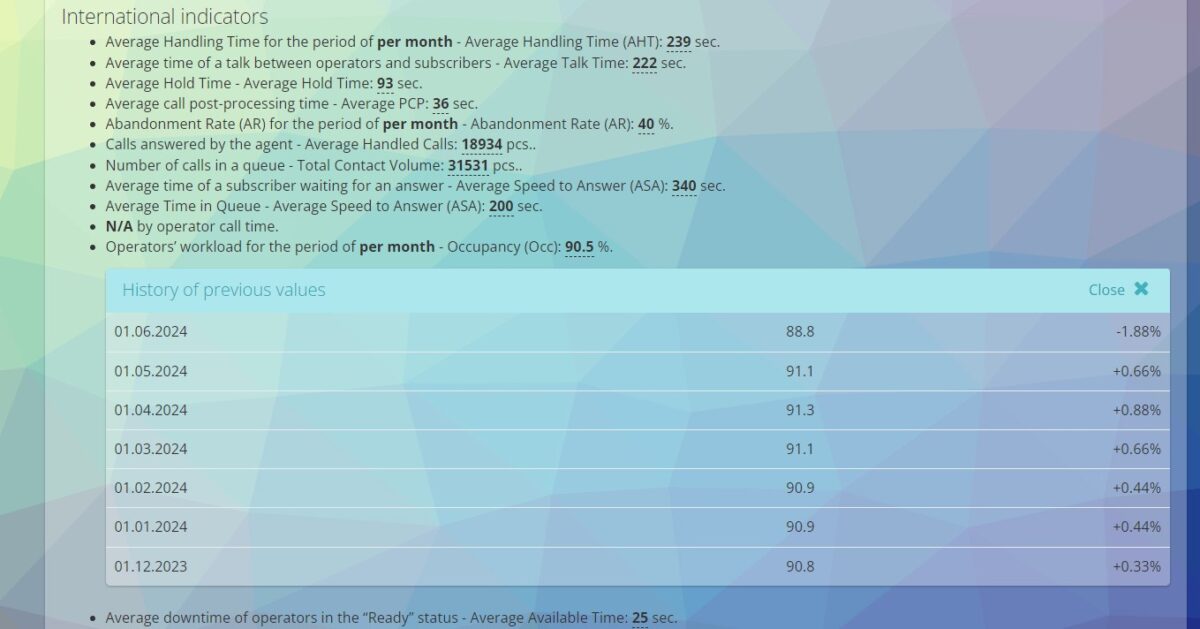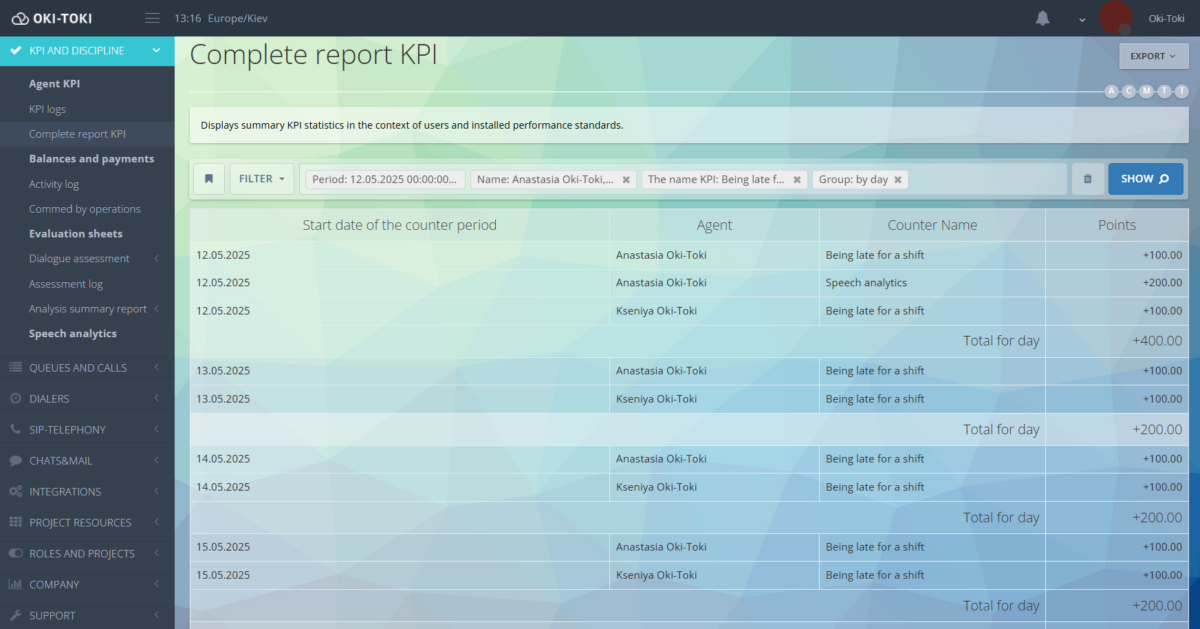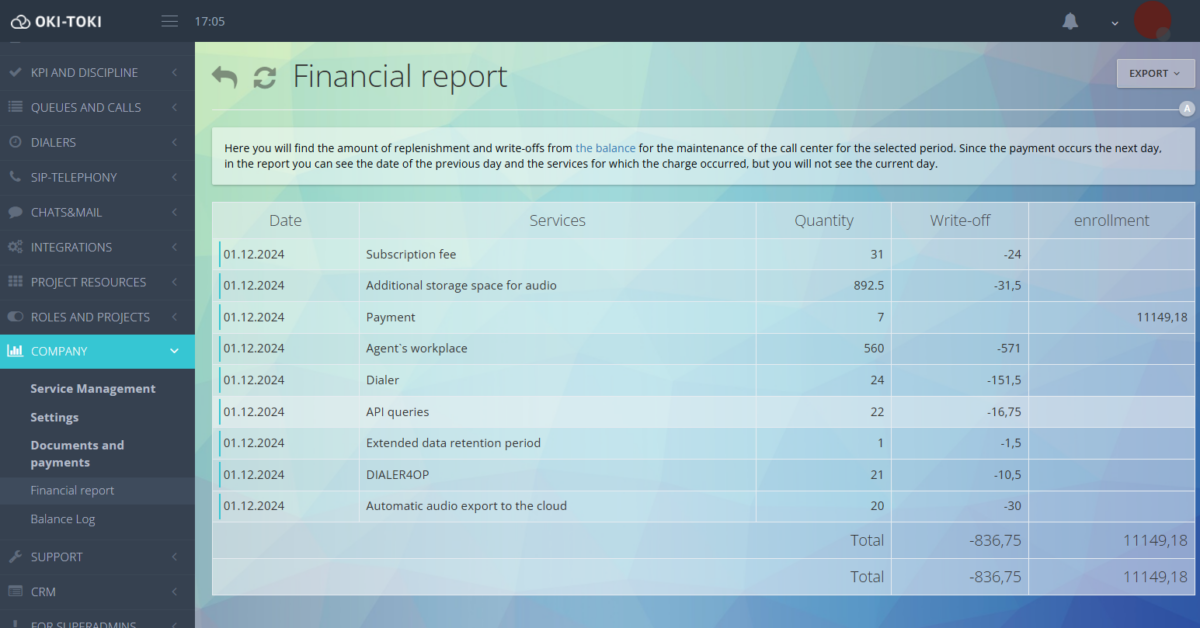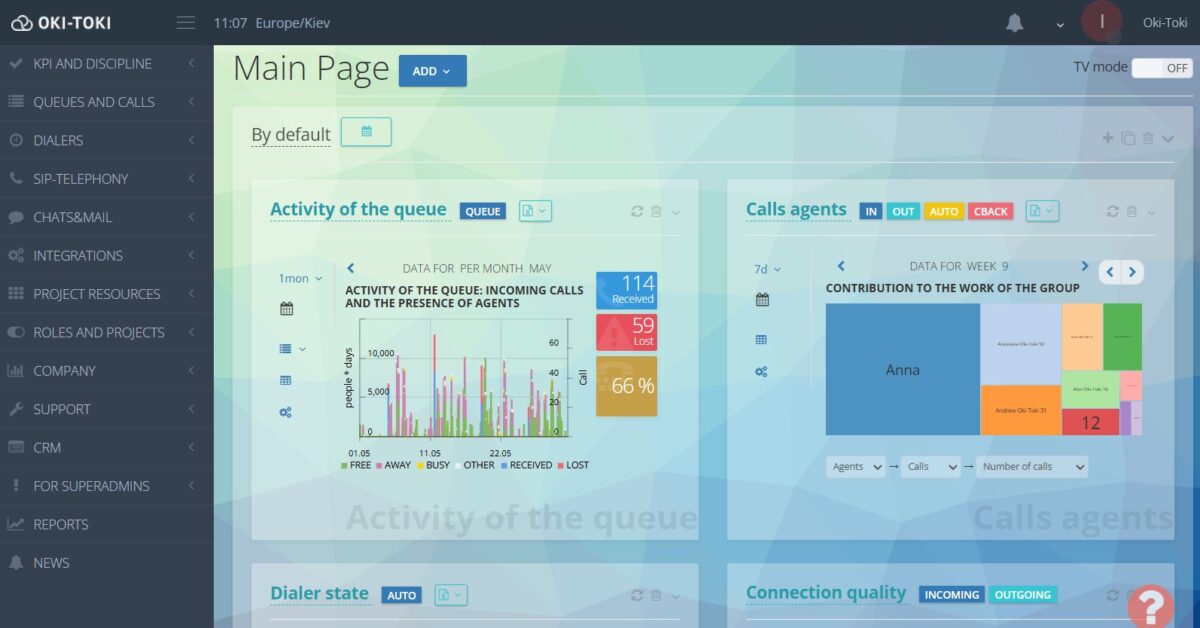The workday of a sales department manager is a balance between numerous tasks. Leads, reports, the team, and clients require attention. In this article, we’ll show you how to organize the process so that everything goes according to plan and goals are achieved.
The role and responsibilities of a sales manager
You are not just a senior; you are the link between expectations and reality. The sales department is a system where every element affects the result. The leader’s task is to ensure that all its parts work together: turning leads into deals, deals into satisfied customers, and customers into long-term cooperation.
The responsibilities of a call center manager are not just a list from a job description, but a whole strategy that helps move step by step towards the result. Here’s what it looks like in practice:
- When setting goals, don’t say “need to sell”. Consider existing resources, employees’ skills, and the market. This is not a fantasy; this is a plan that can realistically be achieved;
- Monitoring sales is not just looking at graphs, but the ability to understand where exactly a deal got “stuck” and how to adjust the course before the client refuses;
- Analysis of reports will show what works and what doesn’t. Without it, it’s impossible to manage sales managers and adjust actions to reach results;
- Recruiting and hiring new employees – this is not just a duty but a way to select candidates with potential who will improve the team;
- If you want to see progress in sales, train employees. Show the work principle on real examples, discuss a specific call – explain how to engage a client, when to speak simpler or with more emotion;
- When leading a team, it’s not just about observing KPIs but helping in difficult moments: support, engage in a conversation with a client if the situation requires it;
- Organize work – does not mean to distribute tasks. It’s constant control of employees’ workload, optimization of the workflow, ensuring everyone knows their role, and the whole team moves in one direction.
You are the tie that holds all the processes together. Success is not only in knowledge and experience, but in how synchronously you can connect all spheres, so the system works smoothly without glitches. This is the true role of the sales department manager – not above, but among, at the intersection of processes, people, and numbers.
What does a sales manager do?
The manager is not limited to setting “sell more”. He sets clear goals, provides the team with tools, and checks indicators daily. Below are the key stages that will help the manager build an effective process.
Planning and forecasting tasks
Effective planning and forecasting are not about “do everything by tomorrow” deadlines, but about developing a thoughtful route of development and controlling results.
To forecast tasks, you can use data from CRM and reporting for monitoring. They will show how many leads come in and how many turn into deals. Based on collected data, calculate the conversion – how much of the planned is actually accomplished.
The plan can be variable and contain several scenarios of events development, for example: “minimum/standard/maximum”. Such an approach will provide a range for execution.
Periodically, it is necessary to compare facts with the forecast, analyze deviations, make adjustments to tasks, and redistribute resources. Skillful planning will help understand how much can be done without overloading the team.
Determining key performance indicators (KPI)
Clear and understandable KPIs are the foundation of successful sales department operation. With their help, you can evaluate how effectively the team performs its tasks.
First, it is important to determine which specific indicators are needed for your department. These can be metrics such as average call handling time (AHT), customer response speed (ASA), agent occupancy (Occupancy), or abandonment rate. These indicators can be found in the “Reports” of Oki-Toki. In the “General” section, select “International indicators” and get data automatically for a selected period: day, week, month.

For sales, such values are also important:
- Conversion – how many calls end with a deal being made;
- Average check – this indicator shows how much an average client brings;
- Number of deals – how many deals are closed over a certain period;
- How much time for processing is spent from the first contact to closing a deal;
- Customer satisfaction level (Customer Satisfaction Score) – how satisfied customers are with the service.
In Oki-Toki, you can track additional indicators, for example, shift lateness and absence, duration of statuses, word analysis in the transcript (speech analytics). Data about counter triggers are collected in the “KPI Log ” and “Summary Report”.

With KPIs, it’s easier to identify areas for improvement and provide the team with clear guidelines for achieving goals. It is important that these indicators are measurable and realistic, so the team can rely on them.
Regular monitoring of sales indicators and reporting
Constant monitoring turns sales from routine work into a managed process, which:
- Helps identify weak spots between sales funnels and fix problems in a timely manner;
- Supports team motivation — they see their results and know what to strive for;
- Ensures transparency: marketing, analytics, and management work in sync.
Collecting reports on the department’s work is easy, since Oki-Toki has over 36 reports that help keep everything under control. With them, it’s easy to navigate through indicators, calls, agent performance, financial costs, etc.

You can monitor work “at the moment” using Oki-Toki widgets. Based on the obtained data, a detailed analysis can be conducted: which departments or managers are falling behind, which calls don’t go as planned. Make adjustments if you identify that conversion is dropping.

Regular monitoring turns sales into a managed process. Timely information helps keep up, react promptly, and maintain the overall growth pace.
Training and supporting sales managers (coaching+mentoring)
Coaching and mentoring are not just “analyzing calls”. It’s a way to create a team that not only works, but also continuously learns. Such an approach helps catch weak spots “on the fly”. Instead of “optimizing post-factum”, you work through the problem with the agent before it becomes critical. Your role as a manager is to allocate enough time for each manager. Plan trainings in your schedule if there are managers in the team whose indicators have dropped and need additional training. Choose the format:
- coaching – practical tasks and analyzing calls;
- mentoring – strategy, career development, and personal growth.
Document progress and changes in the employee’s indicators after each additional session. Motivate agents, because a small bonus for improved performance wouldn’t hurt.
In Oki-Toki, there are not only tools for training but also many useful materials for agents, supervisors, and overall on call center work, gathered in the blog.
Coaching and mentoring are not trendy fads but systemic solutions. A team that knows its strengths and weaknesses, takes responsibility for results, and continues to grow.
Additional tasks of a sales department manager
The manager not only controls the execution of plans and the work of the managers of their department but also interacts with all company departments, looking for new solutions for business development. This is necessary to ensure continuous operation and timely adapt to market changes.
- Cooperation with marketing helps in selecting the right audience segments and attracts those clients who are interested in the purchase. This improves the quality of leads and increases the percentage of “hot” ones;
- Collaboration with the product team – the sales department manager must be in tune with the product team. It is important to understand what their department sells and that the product meets client expectations. As part of Customer Development, the manager should actively participate in analyzing customer needs to ensure that the product or service indeed solves their problems;
- Reporting and interacting with management – is a way to showcase their results. The reports submitted by the manager reflect not only figures but also the strategy, work with clients, and team.
- Searching for new tools and process automation – testing new services, system integrations, and introducing new features contribute to the department’s development.
The role of the manager goes beyond simply managing sales. They must coordinate the work of all departments to achieve results.
Plan for a sales department manager
The head of the sales department always has many responsibilities, and sometimes it’s not easy to keep track of everything: lead the team, monitor sales, and conduct analytics. To not miss anything important and make management more effective, we suggest you a plan for organizing work.
Of course, this is not a strict set of actions. Perhaps some stages the manager can delegate, and some may not be relevant due to the specifics of the company’s work. But it’s always useful to have a “cheat sheet” handy, no matter whether you are an experienced manager or just starting your career.
The sales department manager is the captain of the ship, setting the course. Their task is not just to manage processes but to establish clear goals, guide the team, control tasks, and ensure steady growth. They must understand what happens at each stage, analyze data, adjust the strategy, and maintain team motivation. This is the role of a leader who is not afraid to make decisions and respond promptly to changes, so the team always moves in the right direction.



